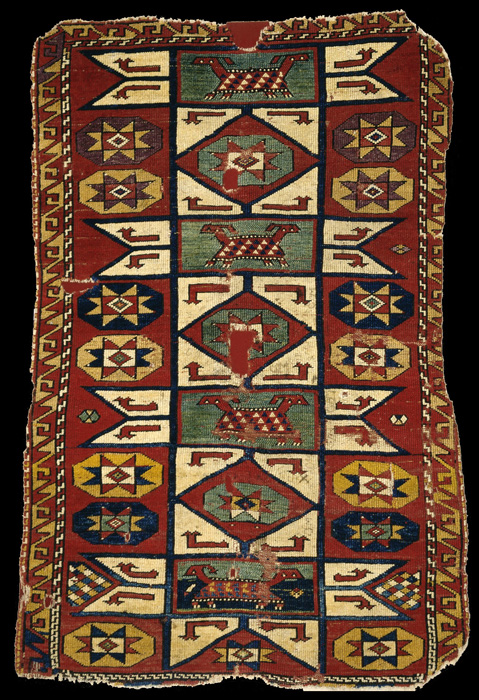"Animals" rug with star motifs
(reconstruction of the 1400s (Karakoyunlu Period) Wilhelm von Bode animal
motif rug from the Pergamonmuseum, Staatliche Museen zu Berlin)
CODE: QQBM15
Size (metric): 92x148cm
Size (ft): 3'0"x4'10"
Area: 1.36 m2
Density: 115 000 knots per square meter, totally ~160 000 knots
Weaving period:
three months
Colors: madder red, medium Persian blue, navy blue, dark
gold yellow, maroon, variegated sage green, dark forest green, natural ivory, natural
brown.
Dyes: 100% natural dyes:
madder,
weld
(Reseda Luteola),
indigo,
dyer's woad,
pomegranate skins,
walnut husks,
natural brown sheep wool, natural ivory sheep wool
- all are eco-friendly and non-toxic
Materials: Handcarded and handspun wool for pile, wool warps (natural
ivory and brown twist) and red wool wefts (two shots)
Weavers'
name: Könül
Handwoven in Azerbaijan, dated 1436 (2015) and signed with the tamga of
Afshar tribe
Design: The field with its red
ground has several rows of large eight-pointed stars. The weaver, though,
has altered the motif, drawing the stars together into a long central
strip, so that the individual stars can no longer be recognized. The basic
shape can be seen in the small eight-sided stars in the octagons with the
differently coloured ground distributed across the rest of the field. The
border represents heads of birds of prey (raptor). Birds of prey are
considered as ongon between Turkic people (each clan has a different
totemic bird). The rug is fascinating in the arrangement of its motifs and
the expressive force of the colour. The presence of the double-headed
animals makes the rug an 'animal carpet'.
|


.jpg)
